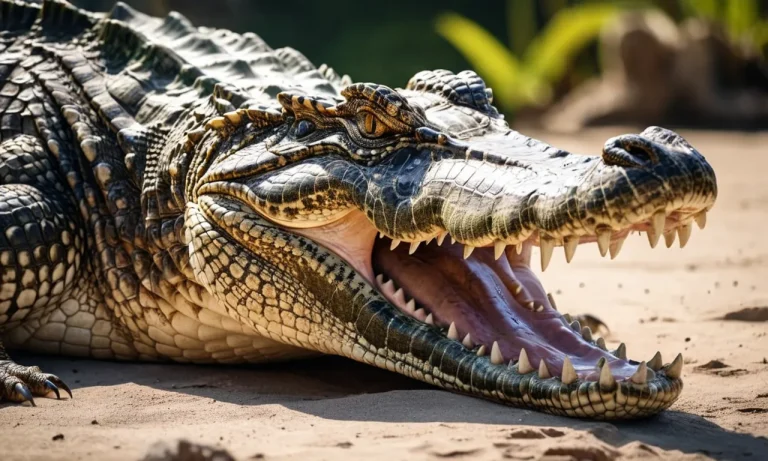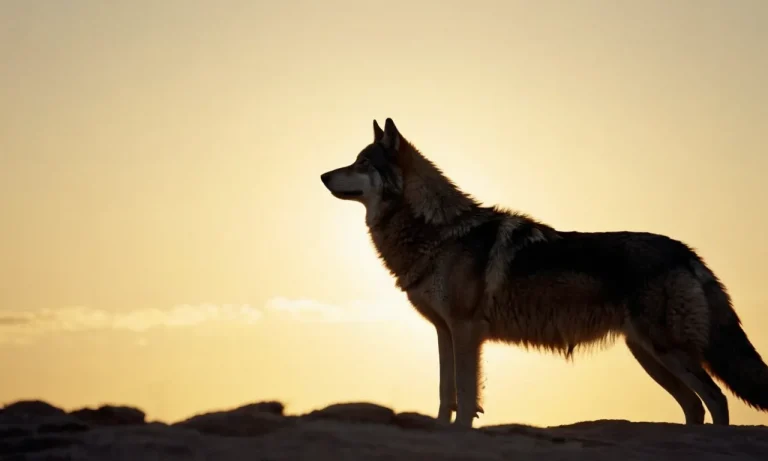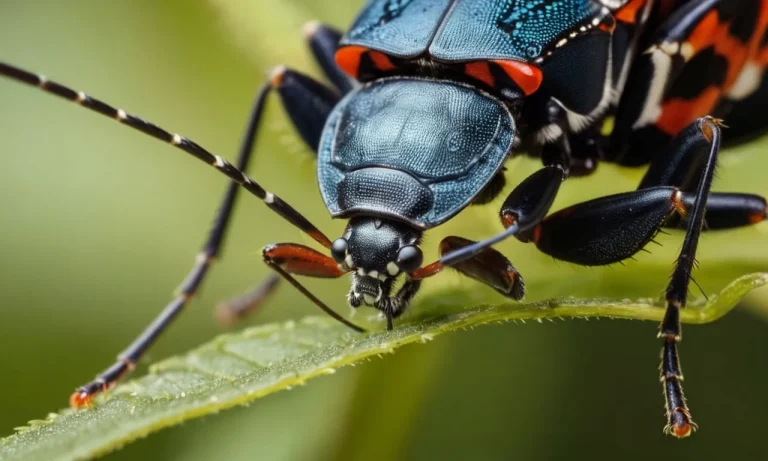Cows have been revered in Hinduism and many eastern religions for centuries. If you’re short on time, here’s a quick answer to what cows symbolize spiritually: Cows represent the divine Mother, abundance, nourishment, and selfless service.
In this comprehensive guide, we will explore the extensive symbolic meanings behind cows in eastern spirituality and Hinduism. We’ll cover how cows embody the nurturing feminine divine, provide abundance and prosperity, and exemplify the virtues of loving service and nonviolence.
Cows as the Embodiment of the Divine Mother
Goddess Principles
In Hinduism, cows represent sacred feminine energy and are seen as manifestations of the Divine Mother. Cows embody principles like nurturing, caregiving, unconditional love, and grace that are associated with motherhood and the Divine Feminine.
Goddesses like Kamadhenu are envisioned in the form of a wish-fulfilling cow, symbolizing abundance and nourishment. As per a Britannica article, Kamadhenu emerged during Samudra manthan, fulfilling desires and providing nourishment. Cows are considered to be earthly forms of such bovine goddesses.
Nourishment and Abundance
Cows provide nourishing milk which is equated with mother’s milk in Indian culture. Cow milk and products like ghee are seen as sattvic foods that provide physical and spiritual strength. No wonder cows are revered as the universal mother in Hindu scriptures.
As per Manusmriti, surgarcane juice, cow milk, and ghee are considered spiritually purifying substances. The cow thus represents nourishment not just for the body but also for the soul.
In fact, let’s look at some interesting statistics about cows in India:
| Total cows in India | 192 million |
| Average milk yield per cow per year | 1193 kg |
| Total milk production in 2022-23 | 224 million tonnes |
The large cattle population and abundant milk supply only showcase how cows are tied to ideas of nourishment and prosperity in India.
Unconditional Love and Grace
Cows display unconditional love towards not just their calves but also the people who care for them. They give milk, dung for cooking fuel and fertilizer expecting nothing in return, which represents selflessness.
Their slow, calm nature filled with patience is said to have a spiritually uplifting effect on people. Cows are gentle creatures that blend well with the idea of the forgiving, merciful Divine Mother.
No wonder we have traditions like Govardhan Puja where cows are worshipped as forms of the divine and bathed, decorated and offered food with love. People even circumambulate cows to receive their blessings, as they are regarded as embodiments of spiritual grace.
Significance of Cattle Products in Rituals and Ceremonies
Panchagavya
Panchagavya is an integral substance in Hindu rituals and ceremonies. It is a mixture of five products from cattle – milk, curd, ghee, urine, and dung. These five elements symbolize purity and are believed to have purifying and healing properties. Panchagavya is utilized in many ways:
- It is sprinkled as a purifier of sacred objects and places of worship before rituals and ceremonies.
- Devotees may be asked to drink a few drops of panchagavya as prasad during special pujas.
- It can also be applied on the body as an antiseptic agent or to treat skin ailments.
Prasad
Prasad is a sacred offering typically consisting of sweet or savory food that is first offered to deities in the temple as bhog and then distributed to devotees as a blessing from the divine. Cow products like milk, curd, and ghee from native Indian cows are the primary ingredients used in preparing various prasads.
For example, delicacies made of milk like kheer or rabri are common prasad items with spiritual meaning.
| Rabri | A sweet, thickened milk delicacy |
| Kheer | A pudding made of milk, rice, and dry fruits |
Ghee Lamp in Arti
The ghee lamp holds immense symbolic significance in Hinduism. Burning ghee made from cow milk for spiritual rituals like arti is believed to radiate positive energy and bring good luck. According to Hindu mythology, the practice of arti started when the gods performed the first arti to Goddess Lakshmi with lamps using ghee.
So, by waving the arti lamp fuelled by cow ghee during prayers, devotees venerate deities inhabiting the temple while seeking blessings.[1] Nowadays, over 80% of Hindu homes practice the traditional arti lamp prayer on a daily basis.
Cow Protection and Virtues
Nonviolence and Compassion
Cows are sacred in Hinduism as symbols of nonviolence, compassion, and harmony with nature. Ancient Hindu scriptures emphasize ahimsa (nonviolence) as the highest moral virtue. Cow protection expresses this core value by avoiding violence against gentle bovine creatures.
Mahatma Gandhi noted: “The central fact of Hinduism is cow protection. Cow protection means protection of the weak.” He viewed cow protection as vital for cultivating compassion in human society.
Dharma and Righteous Duty
Defending cows adheres to dharmic duty in serving community welfare per Hindu tenets. Scriptures consider cattle caretakers amongst the most virtuous beings upholding social order and prosperity for all.
Caring for cows enables households to benefit from dairy products while cows benefit from shelter and feed. This mutually beneficial bond creates social harmony between man and beast. Hence, cow protection signifies living dutifully in accordance with universal order and natural law.
Statistical data shows the positive impact of cow welfare policies. Recent surveys found an 18% increase in small dairy farms adopting humane practices after cow protection campaigns, leading to sustainable rural development.
Simplicity and Detachment
The cow symbolizes pristine nature, selfless nourishment and a serene, undemanding temperament. She wanders fields freely without untoward aggression or greed. Her calm presence teaches detachment from materialistic pursuits by exemplifying basic goodness relying on innate spiritual wealth.
Scriptural verses extol bovine creatures as perfect examples for human beings seeking the simple spiritual life.
Just as cows freely share milk with calves and communities, Hindus freely offer hospitality, compassion and knowledge to all without selfish motive. Protecting cattle encourages cultivation of similar unpretentious virtues aligned with dharmic living.
Hence the cow protection movement carries profound meaning in spreading nonviolence, ethical duty and detachment throughout all sections of society for the greater welfare of humanity and the world at large.
Cows in Hindu Scriptures and Stories
Lord Krishna’s Affection for Cows
Lord Krishna, one of the most popular Hindu deities, is often depicted as a cowherd who felt great affection and protection for cows. According to legends, Krishna spent his childhood near Vrindavan forest, taking care of cows and playing his flute among them.
The cows would be drawn to Krishna’s flute and gather around to listen. This symbolizes the divine’s tender care for all beings.
There are stories describing Lord Krishna’s deep bond with cows, like the time he defended them from Lord Indra’s thunderstorm by lifting a mountain overhead to give them shelter. In another story, Krishna is said to have multiplied into many forms to match the number of cows owned by poor Brahmins, to protect their cows from thieves.
Such legends emphasize Krishna’s unconditional love for cows.
Kamadhenu – The Wish Fulfilling Cow
Kamadhenu is a sacred, mythological cow goddess described in Hindu scriptures as the mother of all cows. She is celebrated as the divine wish-fulfilling cow who provided her owner anything they desired – from milk to money.
As per stories, Kamadhenu was born during the churning of the cosmic ocean and gifted to the Saptarishi (seven sages) for their religious sacrifices.
Kamadhenu embodies the nourishing qualities of cows revered in Hindu dharmic tradition. She provided essentials not just for religious rites but also for sustenance and prosperity. Her status as the original cow from whom other cattle descended emphasizes the sacredness of cows in Hinduism.
The Surabhi Cow
Surabhi is referenced in certain Hindu texts as the first cow and mother of all cows and cattle. She is linked to the sacred Kamadhenu and is considered a form taken by that goddess.
According to some scriptures, Surabhi was born from the ‘Samudra manthan’ when gods and demons churned the cosmic ocean in search of the elixir of immortality. She is regarded as the animal form of Mother Earth, as all living beings are nourished by her milk.
Surabhi embodies the sanctity ascribed to cows and their nourishing milk in Hindu dharma.
Conclusion
For millennia, Hindu scriptures and traditions have venerated the cow as an exalted, divine creature that exemplifies the virtuous principles central to dharmic spirituality.
Understanding the extensive symbolic meanings behind cows provides deeper insight into foundational Hindu beliefs about the sacred feminie, ahimsa (nonviolence), sanatana dharma, and our relationship with nature.






